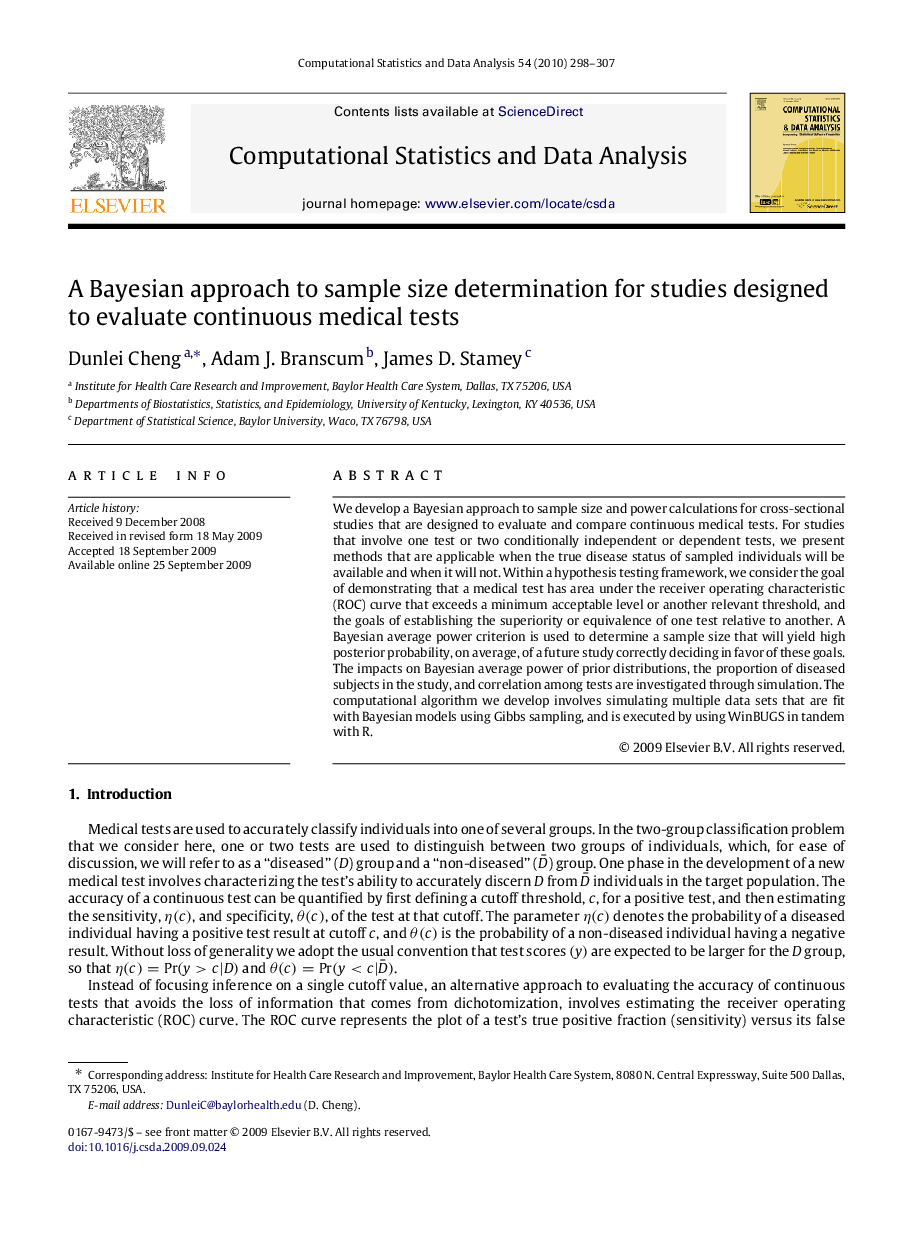| Article ID | Journal | Published Year | Pages | File Type |
|---|---|---|---|---|
| 417055 | Computational Statistics & Data Analysis | 2010 | 10 Pages |
We develop a Bayesian approach to sample size and power calculations for cross-sectional studies that are designed to evaluate and compare continuous medical tests. For studies that involve one test or two conditionally independent or dependent tests, we present methods that are applicable when the true disease status of sampled individuals will be available and when it will not. Within a hypothesis testing framework, we consider the goal of demonstrating that a medical test has area under the receiver operating characteristic (ROC) curve that exceeds a minimum acceptable level or another relevant threshold, and the goals of establishing the superiority or equivalence of one test relative to another. A Bayesian average power criterion is used to determine a sample size that will yield high posterior probability, on average, of a future study correctly deciding in favor of these goals. The impacts on Bayesian average power of prior distributions, the proportion of diseased subjects in the study, and correlation among tests are investigated through simulation. The computational algorithm we develop involves simulating multiple data sets that are fit with Bayesian models using Gibbs sampling, and is executed by using WinBUGS in tandem with R.
